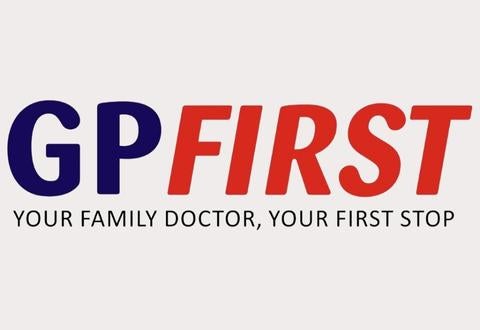What is - Facial Pain

What is Facial Pain (Trigeminal Neuralgia)?
Facial pain (Trigeminal neuralgia) is characterised by brief episodes of intense, stabbing, electric shock-like pain on the face. These episodes occur spontaneously or can be triggered by light touch, chewing, or changes in temperature (i.e. cold). The pain is so intense as to be completely disabling. In addition, weight loss is common because oral triggers prevent affected individuals from eating enough to maintain adequate nutrition. A less common form of the disorder, called “atypical trigeminal neuralgia”, may cause less intense, constant, dull burning or aching pain, sometimes with occasional electric shock-like stabs.
Facial Pain - Causes and Risk Factors
Causes of Facial Pain (Trigeminal Neuralgia)
The cause of this condition is irritation of the fifth cranial nerve (the Trigeminal nerve) which is responsible for providing facial sensation. This irritation is occasionally due to benign tumours or multiple sclerosis, either of which can usually be detected by a high quality magnetic resonance imaging (MRI) of the brain.
In the majority of cases, however, imaging of the brain does not reveal a cause of the nerve irritation. In such cases a small vessel (usually an artery but occasionally a vein) is often found at operation to be compressing the root entry zone of the Trigeminal nerve at the brainstem.
Treatment for Facial Pain
What is the treatment for Facial Pain (Trigeminal Neuralgia)?
Facial pain is a treatable condition. The first line of therapy consists of medications such as Carbamazapine and Gabapetin. In most cases, medical treatment is effective. If medical treatment fails or is limited by significant side effects, there are surgical options for patients with trigeminal neuralgia. Surgery is usually ineffective for atypical trigeminal neuralgia.
Surgical Options for Facial Pain (Trigeminal Neuralgia)
Microvascular Decompression
This surgery through the skull, which removes or insulates the responsible blood vessel(s) using microsurgery - is an effective method of treating many people with this disorder. This is done under general anaesthesia. After the operation, the majority of patients have no facial numbness and are pain-free, requiring no further medications. It is a major operation, and is not without danger. Hearing loss can occur on the side of the operation. Most of the serious and life-threatening complications have occurred in patients above 65-70 years of age. It is less effective for patients who have had other operations in the past.
Percutaneous Radiofrequency Gangliotomy
This type of surgery uses a special needle inserted in the face and radiofrequency-generated heat energy to selectively damage the preganglionic trigeminal rootlets in Meckel’s cave. It is carried out in the awake patient and requires his co-operation and accurate feedback for proper positioning of the needle. This procedure causes irreversible facial numbness. Precise control of the extent of the lesion is not always possible.
Abnormal, unpleasant sensations of itching, burning or crawling (in 20% of patients) can accompany facial numbness. When severe (0.3%), they are as distressing to the patient as their original pain, since they can be present continuously as a severe burning discomfort (anaesthesia dolorosa or analgesia dolorosa) which does not respond to treatment. Loss of feeling in the first Trigeminal division makes the cornea insensate, and leaves the patient at risk for corneal ulceration and can lead to loss of vision.
Percutaneous Glycerol Chemoneurolysis
This type of surgery is also carried out using a needle inserted in the face and this can be performed under general anaesthesia. There is usually only mild sensory loss and rare oculomotor or dysesthetic sequelae. It has the same risks of meningitis and needle misdirection injury as any percutaneous technique. Compared with radiofrequency gangliotomy, the pain recurrence rate is higher, but this is not a significant disadvantage, as the procedure can be easily repeated and is well tolerated.
Radiosurgery
Radiosurgery is focussed radiation treatment performed without opening the skull, using radiosurgery directed at the trigeminal nerve root. Radiosurgery is carried out using the Novalis Shaped-Beam machine located at the NNI-Khoo Teck Puat Radiosurgery Suite at Singapore General Hospital (SGH) Level B1, Block 2. This delivers narrow beams of strong radiation aimed precisely at the trigeminal nerve from many directions. Normal brain tissue therefore receives only a fraction of the total radiation dose received by the trigeminal nerve. Exact knowledge of the tumour location is necessary, and this is achieved by securing the head firmly but painless in a custom-made mask system and doing a computed tomography (CT) scan of the head with the mask system in place. For treatment planning, a MRI scan of the head is also required.
Surgical Choices and Risk Factors
The choice of operation depends on the patient’s age, associated illness and assessment of the risks he is willing to assume. For most “younger” patients, microvascular decompression is the best option. Younger patients have a better chance of tolerating surgery without complications, and a longer future life expectancy in which to deal with problems that can follow percutaneous lesioning. They also have a higher risk of pain recurrence following such procedures and will likely need more future treatments resulting in increased cumulative side-effects.
Older patients (>65-70 years of age) have increased risks of surgical complications. But because of shorter overall life expectancy, they are likely to require fewer repetitions of percutaneous procedures with less cumulative denervation sequelae. Significant associated illness such as chronic obstructive pulmonary disease, coronary artery disease and diabetes mellitus can also increase the risks of such major surgery.
Contributed by
The information provided is not intended as medical advice. Terms of use. Information provided by SingHealth.
Condition Treated At
Department
Anaesthesia & Surgical Intensive Care
Department
Neuroscience Clinic
Department
Pain Medicine
Department
Neurology
Get to know our doctors at SingHealth Hospitals in Singapore.
Get to know our doctors at SingHealth Hospitals in Singapore. here.



















